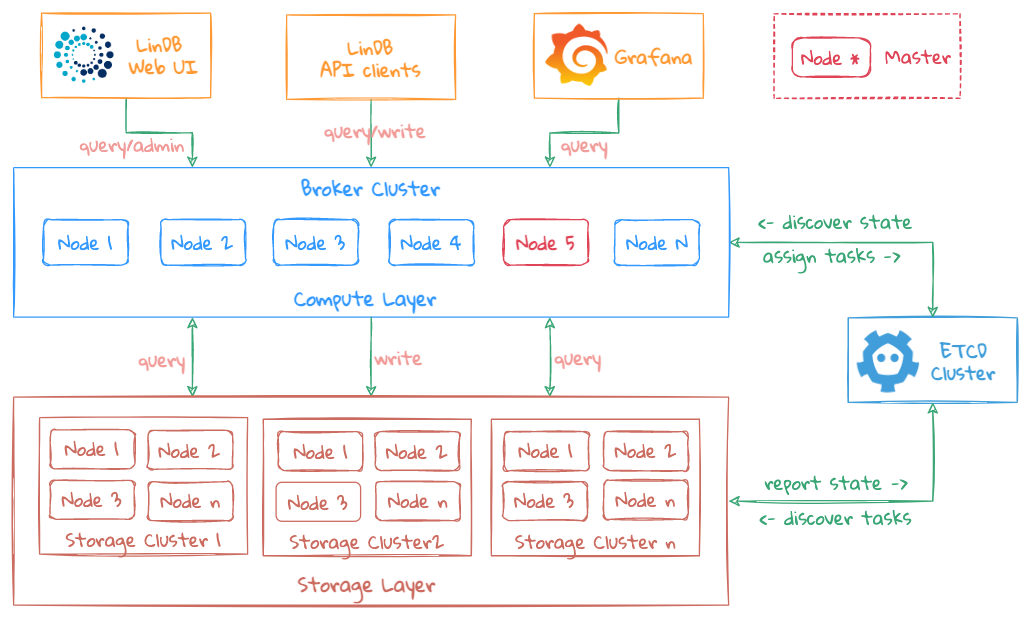Introduction
What is LinDB?
LinDB is a high-performance open source distributed time series database that supports multiple replicas, good horizontal scalability, which can be used for IoT, industrial Internet, IT operation and maintenance monitoring, etc.
LinDB is designed for high availability, high performance, query optimization, and weak dependence on external components, which is suitable for medium and large-scale Internet enterprises to solve the pain-point of metric storage and analysis under massive data.
Key features
The key features of LinDB are as follows:
- Simple for use and operate, only rely on ETCD, deployed as a binary file with stand-alone mode and cluster mode;
- Support cluster mode, with good horizontal scalability;
- Support multiple replicas to ensure high availability and is still able to work with only one replica alive.
- Support multiple IDCs, write in either idc, and query and aggregate over multi idc;
- Ultimate consistency, the inevitable choice for the pursuit of low latency and scalability;
- Self-monitoring capability, Fast FailOver;
- Self-governance capability, Defensive capability against malicious users;
Architecture
LinDB distributed time series database adopts the design of separation of computing and storage. LinDB is composed of three large modules, each communicates with each other, namely Broker, Storage, and ETCD.
- Compute Layer: Broker;
- Storage Layer: Storage;
- Metadata/Schedule Layout: ETCD;

Scenarios
Applicable scenarios
- IT operation and maintenance monitoring
LinDB is suitable for numerical time series recording scenarios for monitoring, storage and analysis of monitoring metric data in IaaS, PaaS, SaaS and application layers, and supports multi-dimensional data to make metric more expressive, more convenient to monitor health status, and optimize instance usage.
- IoT
LinDB makes it easier and faster to analyze time series data generated by IoT applications. For example, smart home device manufacturers can use LinDB storage to collect motion or temperature data from device sensors to help consumers better understand the health of their devices.
Not applicable to scenarios
Currently, LinDB only supports recording numeric time series data, and the time accuracy is up to the second-level. If you have higher temporal accuracy or text-based data record demand, then LinDB is not a good choice.